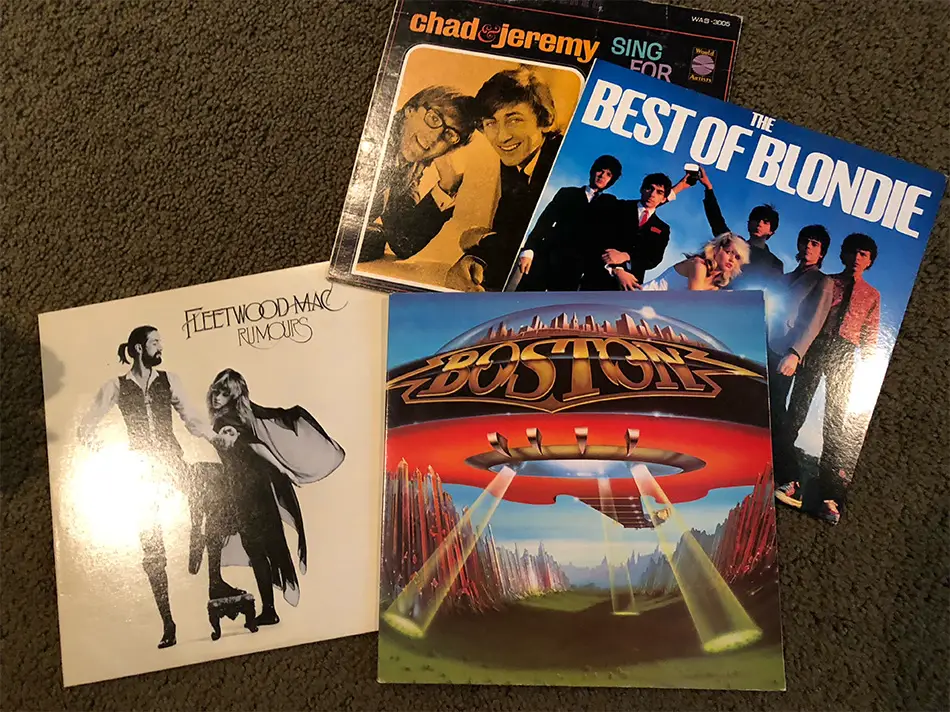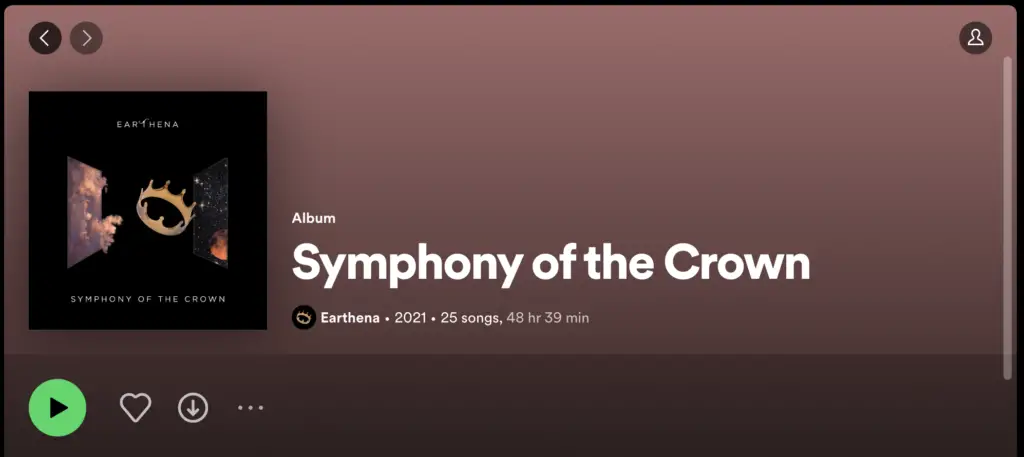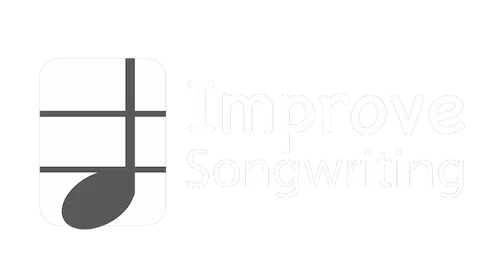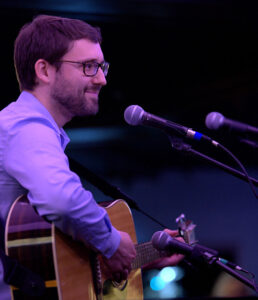Are you a musician or songwriter trying to answer the question, “How long should a song be these days?”
Well, I’ll tell you! In 2023, the average song length is… drumroll please… 3 minutes and 15 seconds!
But before you take that number as the whole answer and hit that back button, I want to point out that there’s a LOT more nuance to the average song length today. If you think about it, the sheer range of platforms where people consume music is much bigger than it was just 10-20 years ago.
And the effect of that is shrinking song lengths. If you look back and take an average of the duration of number one songs during all music eras in the US, you get an average of 3.8 minutes in length. But compare that to the years since 2009, when the length of those #1 singles has slowly been shrinking to a current average of 3.5 minutes!
What’s going on here? In this post, I want to look at how the ideal song length differs by platform – specifically, I’ll look at terrestrial radio, streaming platforms, and social media sites. I’ll talk about why songs have started to shrinking in length. Then, I’ll give you a few pointers on how to create songs that can work for each one!
Let’s do it!
Improve your songwriting by mastering piano.
$49
ONLY
A Quick History of Song Length in Popular Music
Real quick: if you’re just wanting to jump to the tips for deciding on song length for your own songs, feel free to click here – I won’t be offended!
Otherwise, I thought it would be helpful to take a look back at how song length has changed in popular music over the decades. I’ve broken it down into a few colloquial “eras” – this is an easy way to think about how the format for listening to recorded music has changed.
(Also, in case it’s not clear, I’m from the US, so this will be a fairly US-centric rundown… No disrespect to the musical stylings of other countries and cultures during this same period!)
The Phonograph Era
If we go back to the early 20th century, the main sources of music were sheet music and live performances, as this was mostly before recorded music became common. In fact, the phonograph was still a pretty novel invention, if you can believe it!
And the song length back then? Pretty flexible, since it was the performers who decided how long to play. One of the biggest genres at that time was swing jazz, so improvisation was still a big factor.
Overall, song length was pretty fluid.
The Vinyl Era
If we fast forward to the 1940s and 1950s, a whole new world of music emerged with the popularity of vinyl records and record players (an evolution of the primitive phonograph). Vinyl records had a limited amount of physical space for music, about three to five minutes per side.
As a result, songs had to be squeezed down to fit this format. Think about those short and sweet doo-wop tunes like “Duke of Earl” (2:27) or those catchy rock ‘n’ roll classics like “Louie, Louie” (2:07).
Many pop songs in this era lasted 2.5 minutes, 2 minutes, or sometimes even shorter!
(And if you’re wondering… yes, I asked my parents about their experience growing up with vinyl for this article, so there you go. Primary sources!)

The LP and Radio Era
Next up, we had the 1960s and 1970s, which were the heyday of the long play (LP) record.
There was more room to groove, which led to some truly epic tracks like Led Zeppelin’s “Stairway to Heaven” and Don McLean’s “American Pie,” both of which clocked in at over seven minutes!
But even so, radio was a major player during these incredible decades for music. Radio stations always preferred to air shorter, tighter tunes so they could play more songs (and more ads) without their listeners going anywhere.
That’s why, even in the age of the LP, the three-minute pop song still held sway!
The Compact Disc Era
After the domination of vinyl, cassette tapes and CDs came onto the scene in the 1980s and 1990s, offering even more space for songs to fit in. Suddenly, you could have hidden tracks and extra-long albums!
At the same time, radio continued to dominate during the days of Michael Jackson, glam metal, and grunge – and MTV also came onto the scene, leading to a rise in music videos that had to stay within 4 or 5 minutes in length.
Both of these essential platforms for music continued to keep song lengths in check!
The Streaming Era
Fast forward to today: the digital age. By now, there’s basically no physical constraints to worry about (unless you’re sympathetic to the server costs of a tech giant like YouTube or Spotify).
Theoretically, that means you could release a 38-minute song, if you wanted to! Or even a 48-hour album…

But here’s the reality: streaming platforms and social media have entered the picture, so it seems like our songs are actually getting shorter. Why? (Well, don’t worry – I’ll dive into that more in a little bit!)
But the big takeaway here is that technology has played a huge role in influencing song length throughout the history of recorded music. The medium has often dictated the message – or in this case, the music.
But today, attention spans might be the biggest factor in why songs are shrinking. Let’s take a look at song length on each platform!
1) Song Length on Terrestrial Radio
First up: how long should a song be on the radio?
With terrestrial radio, it’s sort of a Goldilocks situation when it comes to song length: not too long, not too short – it’s got to be just right!
That’s because radio stations need a balance between playing as many songs as possible and squeezing in those essential (revenue-generating) ads.
The sweet spot for radio songs is usually around the 3 to 4 minute mark. That’s why you’ll notice that radio edits of songs often cut down those epic guitar solos or extra choruses – and sometimes even trim down the intro and pre-choruses. Remember Green Day’s “Jesus of Suburbia?” It’s a whopping nine minutes in its full glory, but on the radio, it usually gets cut down to a more manageable (and decidedly less epic) five minutes.
But it’s not just about being able to fit in more songs and ads on the radio. A shorter, catchier song is more likely to stick in your mind as the listener, which means you’re more likely to sing along or even buy the song later. Traditionally, it’s been a win-win situation for both the radio stations and the artists to mostly stick to that magical 3 to 4 minute range!
Now, here’s an interesting twist: In the streaming age, you might think radio has lost its power, but that isn’t true! Radio airplay still significantly influences a song’s chart success. In fact, radio often sets the stage for song length before a song ever hits streaming platforms, just like many TV shows fit into standard broadcast television length before you view them on a video streaming platform like Hulu or Peacock.
While the music market is more fragmented than it used to be, a hit on the radio is still likely to result in more streams, more downloads, and a higher spot on the charts. After all, even if you’re not personally tuning into the radio as much as you used to, many stores, restaurants, and other public places do – and so do a lot of regular listeners!
If getting on the radio is your goal, I’d recommend aiming for 3 to 3.5 minutes in song length. But that’s not a bad thing – some of the greatest pop songs of all time have managed to make their mark at that duration!
2) The Best Length for Songs on Streaming Services
Okay, next question: how long should a song be for streaming services like Spotify, Apple Music, and Tidal?
Well, it’s not as straightforward as it was for radio: you don’t necessarily have a “one size fits all” approach to song length on streaming services. But there is some data to sift through here that can give us a clue.
According to a dataset of songs pulled from Spotify’s API, average songs back in 1990 were four minutes and 19 seconds – today, the average new song released on Spotify is three minutes and 17 seconds. That gives you a sense of the direction song length is headed.
However, there’s another wrinkle, which is the existence of minimum song lengths for music streaming! Spotify requires a song to be at least 30 seconds, and most of these services require at least 20 or 30 seconds of play on a song before it’s counted as a “play.”
That detail is important – with streaming services, it really is all about the plays. The more times a song is streamed, the more revenue is generated for the artist and the platform. So, shorter songs that people replay again and again are an obvious goal!
In fact, newer artists have caught onto this trend, releasing both shorter songs and more of them! Think of hits by artists like Post Malone or Lil Nas X. Many of their tracks come in under three minutes (and sometimes barely more than two!), which makes the songs perfectly suited to be played on repeat.
In addition, playlists on music streaming services like Spotify tend to include shorter, catchy tunes, similar to how radio traditionally gravitated toward quick hits.
I would say the optimal song length for a streaming platform is more about strategy than a single hard-and-fast rule. It’s about knowing your audience and understanding how they listen. But somewhere between 2 to 3 minutes is a good range to shoot for.
3) The Ideal Length of a Song on Social Media
Okay, how long should a song on social media be? I’m talking about platforms like Instagram and TikTok, as well as YouTube.
If you follow anyone on these social media sites, you’ve probably noticed that many songs are short and snappy – generally anywhere from 15 seconds to a minute. The rule of thumb is to leave them wanting more so they loop your song once, twice, or more!
Remember the sea shanty trend on TikTok? Or the countless dance challenges set to catchy beats? These are perfect examples of how short snippets of songs have taken over our social media feeds. The songs are catchy and the videos are shareable, and when blessed by the algorithm gods, they can catapult unknown artists to stardom overnight!
Honestly, though, we’ve entered a weird place where just self-contained song hooks or snippets can become wildly popular. Even someone like me who doesn’t spend much time on social media became aware of the song “Heat Waves” by Glass Animals once it was a huge hit thanks to TikTok.
But the actual part that circulated on the social site was a remixed version of this chorus fragment:
Sometimes, all I think about is you
Late nights in the middle of June
Heat waves been fakin’ me out
Can’t make you happier now
That’s it!
This memorable and memeable hook was lip-synced all over TikTok in 2021 as part of a trend to talk about who you might be missing.
Now, that’s not to say the whole song was this short – but it goes to show that a lot of people’s exposure to your song may start as a small chunk of it on a social media site. And in a world of constant scrolling, it’s clear you’ve got to hook listeners fast, which is why many artists are putting even more of their focus on crafting catchy hooks and memorable choruses that can become viral sensations.
But here’s the coolest part! Just like radio and streaming, social media platforms can have a significant impact on a song’s commercial success. A viral hit on TikTok can translate into streams, downloads, and even radio plays. It’s a domino effect, with a 15-second clip potentially kickstarting a song’s journey to the top of the charts (like in the case of Heat Waves, or a song like “My Money Don’t Jiggle Jiggle, It Folds” by Louis Theroux).
So, in the social media universe, the name of the game is short, catchy, and shareable. It’s a whole new ballgame for musicians, who now need to think about how their songs could be used for viral dances, performative lyrics, and TikTok trends. Of course, the whole idea is connecting with the audience, and these platforms offer more possibilities than ever for doing that!
Making Songs for Different Lengths (Without Sacrificing Creativity)
So, how do you create songs that fit all of these different length requirements (without losing your artistic soul in the process)?
Here are a few ideas.
1. Master the Art of the Hook: Whether it’s a catchy chorus for a TikTok dance challenge or a memorable riff for a radio hit, a good hook can make your song stand out, no matter its length. So, spend some time crafting a hook that’s catchy, memorable, and a good representation of your style!
2. Shorten Instrumental Breaks: We all love a good guitar solo or a dramatic orchestral break, but when you’re strapped for time, it’s okay to ditch a lot of the instrumental runtime. Keep your instrumental sections tight and focused, serving the song rather than stealing the spotlight. For example, these days, a lot of songs jump right in without an elaborate intro, and many of them have ditched solos or instrumental breaks during the bridge section. (Learn more about how to start a song with these song intro ideas!)
3. Practice Efficient Songwriting: When it comes to verses and choruses, every word counts. Try to convey your message in as few words as possible, without compromising the depth in your lyrics. Put yourself in your listener’s shoes and think about the words and phrases that can grab their attention. Your message will pack a greater emotional punch if you’re careful with the lyrics you include.
4. Embrace the Mixing Process: Don’t be afraid to trim down your song in the mixing stage. Sometimes, a good edit can make a song stronger, highlighting the best parts and getting rid of anything that doesn’t serve the song. Maybe you decide you need a chorus that can double as a hooky TikTok riff, or a full 3-to-4 minute song that can be truncated to 2 minutes for maximum plays on Spotify. Once you’ve recorded the building blocks of your song, see how it feels at different lengths with different combinations of verse, chorus, and other parts of a song.
5. Be Flexible and Experiment: Music isn’t a one-size-fits-all art, and what works for one platform might not work for another. So, don’t be afraid to create different versions of your songs to fit different platforms. You could have a full-length version for streaming, a radio edit, and a 15-second version for TikTok. The possibilities are endless!
Most importantly, remember that these are just guidelines, not strict rules. While it’s good to keep some of these tips in mind as you write your songs, don’t let them limit your musical exploration. After all, you’re an artist, and artists are meant to break the rules sometimes!
I would also point out that not every song you create needs to fit into every medium. You may write little snippets of songs to share on social media that never become full songs, AND you may also craft more conventional songs that are destined for the radio and can’t easily break down into short sections. That’s all okay!
With so many distributions channels for music in this day and age, it’s become a different ballgame for us songwriters and musicians. By making the most of each platform, you improve the odds of getting your music discovered and enjoyed the world over!
How Long Should a Song Be Wrap-up
Well, believe it or not, we’re closing in on the end of this article!
Whether you feel like this article was too short, too long, or just right, I hope you now have a better understanding of song length, both because it’s an interesting topic AND because it’s easier to write successful music if you have a sense of how your audience will consume it!
In the end, song length obviously matters, but it’s not just about fitting your musical idea into a specific time frame. It’s more about understanding your audience, knowing the platform you’re targeting, and using that knowledge to create music that resonates with listeners – where they’re listening to it!
I also want to point out that you can absolutely write music without conforming to the standards of modern charting pop songs. There are tons of incredible songs from musical artists who aren’t the most popular on the planet, but still have a following who enjoys their music, whatever length it happens to be.
Ultimately, whether you’re penning a three-minute pop anthem for the radio, crafting a catchy 15-second hook for TikTok, or composing a 10-minute musical epic for your next physical album, remember this: a great song transcends its length.
Also remember that song length is just one of many tools in a musician’s toolkit. It’s certainly a factor to be aware of and mess around with, but don’t let it completely dictate your creative process. I’ve written about other aspects of writing great songs that you can play with, from lyric writing tips to changing keys – feel free to check them all out!
Now, it’s time to go forth and create. Try not to take too long!
If you want to get better at writing memorable music that resonates, I recommend that you get familiar with an instrument like piano. The more you know about how great songs are constructed sonically, the easier it will be for you to create a masterpiece yourself. Check out Piano for All below to get started!
Improve your songwriting by mastering piano.
$49
ONLY

![How Long Should a Song Be? [Radio, Streaming, and Social!]](https://improvesongwriting.com/wp-content/uploads/2023/05/How-Long-Should-a-Song-Be.jpg)
![What Makes a Song Good? [5 Great Song Tips for Songwriters]](https://improvesongwriting.com/wp-content/uploads/2021/10/What-Makes-a-Song-Good-440x264.jpg)






